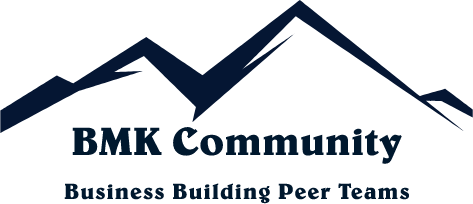Business ownership may have been something that you set out to accomplish or it may be something that you stumbled into. Whatever the case, if you own your own business then you know that it’s a full-time job that will force you to expand your skill set beyond your comfort zone and adapt to making decisions maybe not yet “fully baked.” As a business owner, you have invested greatly in the business you own, and your journey should lead to something or somewhere. What is the financial reward you want at the end of the journey you are on? You will probably never know with certainty unless you understand what your business is worth.
This blog will address what it takes to prepare your business for a sale and the factors that influence the real value of your business.
What is the business worth?
With so many varying opinions and experts in the market giving you partial or false advice on the “going price” of a reseller business, it can difficult to sift the fact from the fiction. Understanding the value of any business comes down to two important principals:
- There is the price that someone is willing to pay for your company.
- There is a valuation of your business, and it is not necessarily the same as the price someone may be willing to pay.
The valuation of your business is where you should begin. Setting the reasonable expectation of what you can expect to get out of your business will help you get the dollar amount you desire. In clearer terms, the valuation of your business is what the company is worth when there is no actual buyer, and that is the price you will want to know to set goals and/or find the right buyer.
There are financial factors that directly impact the value of your business.
To better understand these factors, ask yourself the following questions:
- Where does your revenue come from? Is it coming from project work, product margin and/or subscriptions fees? How much of that revenue is recurring?
- What is the Gross Margin on your revenue? In other words, what is the free cash flow on the amount of revenue coming into the organization today? Is that money earmarked for debt, salaries and other items that reduce free cash flow?
- What are your current debt levels and why the do they exist? This is an important financial factor for any buyer. Is it because the organization needed to invest in order to grow or is the debt a result of your high salaries and low sales or pricing issues? Is this reinvestment that the acquirer will need to continue after they buy the company in order to operate it? Since debt is rarely taken on by an acquirer, is there enough cash in your coffers or in the transaction down payment to retire the debt?
- What does your billing processes look like today? Do you bill before the work is done or are you paid in the arrears, indicating that there are lots of clients who owe you money?
- What is your client mix? Is more than 10% of your revenue coming from a single client? Do you have a mix of client types and amounts that would lessen the blow if one client were to leave?
Asking yourself these question in advance will help prepare you for the same questions a buyer will ask when determining a sale price for your business.
An Attractive Business Matters When It Comes to Getting a Higher Price Tag
We all want to sell our business at the best possible price. No one ever goes into a sale willing to sell below market price. Having said that, not all businesses are “attractive” to the buyer, meaning not all business have efficient and transferable systems, tools and processes in place that would be attractive to a buyer. To make your business more attractive and to get the higher price tag that you desire, consider the following:
- Organization matters. Ensuring you have the right tools in place to keep productivity running at an optimal level and having those processes documented send a clear message to the buyer that the infrastructure is durable and repeatable.
- Hiring and Paying Employees at the Right Price Matters. In other words, maintaining a lean staff that can be well compensated is important to the purchase price. A buyer wants to know that they are acquiring a talented team that won’t immediately quit upon purchase due to an overtaxed staffing situation and/or underpaid employees, which may cost them more money to keep. On the other hand, if they are acquiring a bloated team that will have to be downsized to get the job done profitably, the buyer is not going to pay the seller to do that for them. People, talent, and compensation directly impact your attractiveness to a buyer and the purchase price.
- Client stickiness matters. Maintaining current client revenues is critical to the bottom line. Are the clients in your mix easily maintained and contracted? Is what you do for them enough to keep them repeat buyers? Be prepared to demonstrate just how you keep your clients sticky to your
- Client type matters. Attractive clients are high revenue and high margin clients. While the buyer wants to see a healthy mix of clients, avoiding revenues that come from a single client source and/or groups of clients that produce low margins will impact the sale price.
- A strong sales force matters. True sales processes and a team that can produce year-over-year growth is going to greatly influence the value of your business. Note that this will be difficult to achieve if the owner brings in most of the new business sales. While it is a healthy business for an owner to accompany salespeople on important deals, a strong sales force should not be dependent on the owner to generate revenue. Build a strong sales force and make your business attractive to future buyers.
- Debt matters. The ideal goal is to have little to no long-term debt. Buyers will question debt. A buyer may take on the debt and make it part of the purchase price, but more likely it will be required to be paid off on or before closing. Debt is typically not attractive to a buyer and often lowers the final dollars you receive on a sale.
Remember: The Bigger Mess, The Lower the Price Tag
Just as being attractive to a buyer increases the price tag, having messy, internal processes lower the price tag. Regardless of the amount of money you make, if you are not able to show the buyer the system you have in place to make that money (aka: process and documented operations) or how stable your ability to make that money is (aka high-risk issues like client concentration and loose client agreements), the value of your business diminishes. Higher risk may take the form of a reduced price and/or a deal structure that mitigates the risk.
Forget EBITA. Free Cash Flow is What Counts.
Many owners go into a possible sale thinking their organization is worth more than it is since they’ve been told that it is. Yes, our industry is ripe with experts that speak to the value of the business based on factors such as multiples of EBITA and/or of your current annual revenue. Too many times an owner will get a price in their mind and believe the business is worth a set price based on hearsay and false information. This perceived value then becomes the “anchor price” in the mind of the owner, and it is the price that he/she will compare all future prices and offers from. The anchor price is not only an imaginary number, but it usually leads to disappointment when future offers fail to match up to the anchor price. The price of your business is determined by a set of financial and non-financial factors that have much to do with free cash flow and even more to do with what a buyer thinks they can do with your business.
So, what is EBITA? It was originally used as a way to calculate how an organization could handle its own debt load once a company was acquired. EBITA is a variation of the more commonly used term, EBITDA, which deducts depreciation expenses. Both are used to gauge a company’s operating profitability – that is the earnings generated in the normal course of doing business, ignoring capital expenditures and financing costs.
SPOILER ALERT: EBITDA is not the only number your buyer will consider since it does not take into consideration capital expenditures and debt that you may be used to operate your business and deliver services to your clients. EBITDA is not found in the accounting world of GAAP. The real number that impacts the value of your business is free cash flow. Free cash flow accounts for depreciation and amortization on all business operations expenditures. EBITDA hides in your balance sheet normal business operations costs (such as the hosting equipment you buy for expansion or replacement via loan or capital lease) that would otherwise be on your P&L as COGS, and by contrast, free cash flow is the true reflection of your P&L and that is what matters to the buyer.
Deals are made by free cash flow and what a buyer can do going forward with that free cash flow.
What should a business owner do now to prepare 5, 10 and 20 years down the road?
Once you decide what you want to do when the time comes to retire to that tropical island or cabin in the Swiss Alps, you need to determine how long it is going to take you to get the dollar amount that can be achieved based on the value of your business. Here’s a quick list of best practices to help you get started:
- Decide what you want to get out of the business. Are you a business owner who has organically grown the business and wants to maintain what you have or are you the type of business owner who has built your business around a strategic set of objectives with the intent to sell? Whatever the case, know what type of business owner you are. Take the survey now!
- Conduct a Market Value Analysis. The Market Value Analysis is your reality check. Know with confidence what your business is worth today. Inquire about our Market Readiness Valuation Assessment tailored to your industry.
- Fix the problems now. Address red flags like staffing issues, revenue buckets, and contract issues today to prepare for tomorrow. Bering McKinley provides an actionable plan based on your market assessment and owner type to help you get the dollar amount you want, at the desired time. Ask us about our Business Destination packages.
Legendary all-star Yogi Berra said it best, “If you don’t know where you are going, you might wind up somewhere else.” Owning your own business is just the beginning of the journey. Understanding the type of business you have built, and then taking deliberate actions to get the desired outcome is what the business journey is all about. Don’t let fate or fear stand in the way of you getting the top dollar you desire from your business.
A special thank you to George Sierchio of Cogent Growth Partners for co-authoring this blog and providing valuable insight into the key steps business owners must take to prepare for a sale.



